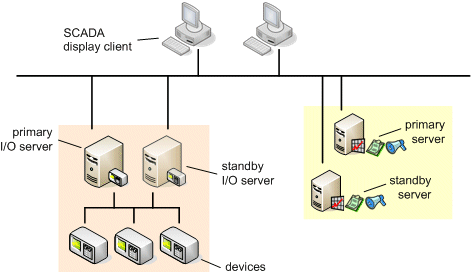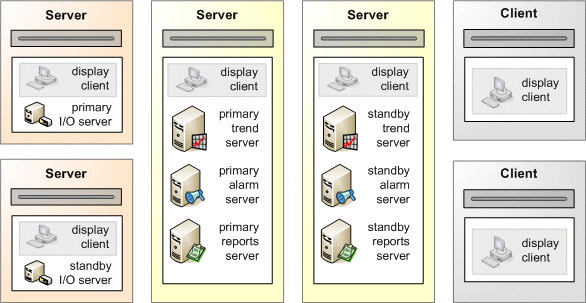
The ability to define primary and standby servers within a project allows hardware redundancy to be built into your system infrastructure. This helps prevent situations where an error on one server results in the overall system becoming inoperative. Systems of this type are especially beneficial when service continuity and/or secure data collection are important.

In the case of I/O Server redundancy, a standby server is maintained in parallel to the primary server. If a hardware error is detected, the standby server can assume control of device communication with minimal interruption to the system. You can also use redundant I/O Servers to split the processing load.
Alarm, report and Trends Servers can also be implemented as redundant servers. This improves the likelihood that clients will continue to have access to data from a standby server in the case a primary server becomes inoperative. CitectSCADA maintains identical data on both servers.
In the diagram below, the primary and standby I/O Servers are deployed independently, while the alarms, trends and reports servers are run as separate processes on common primary and standby computers. In this case, the entire system can be configured as a single cluster.
